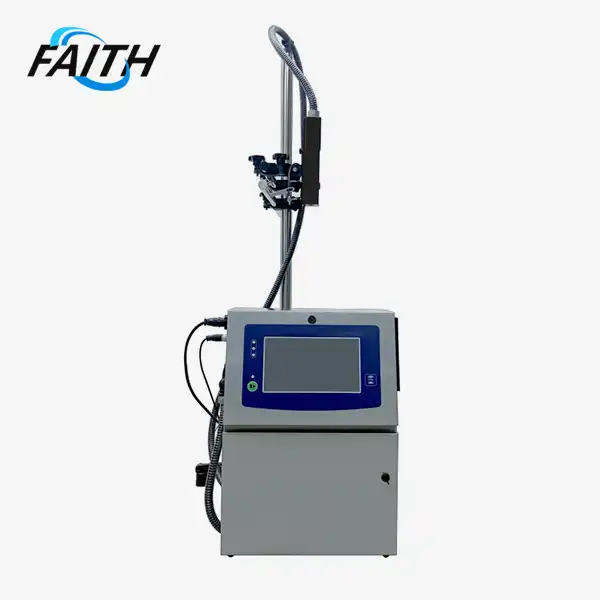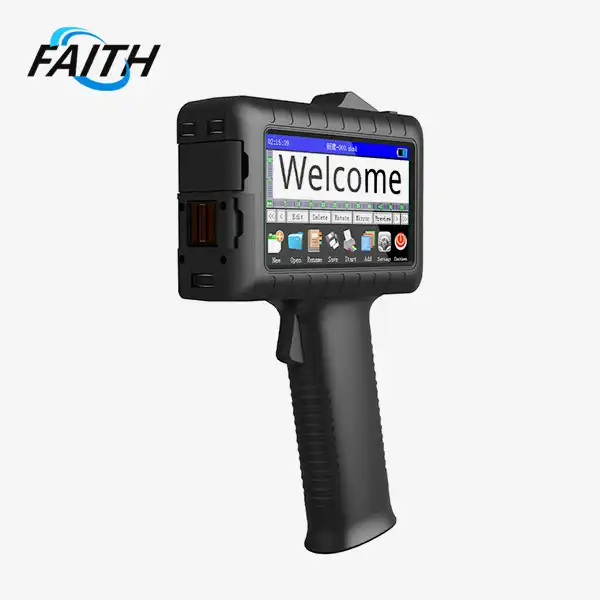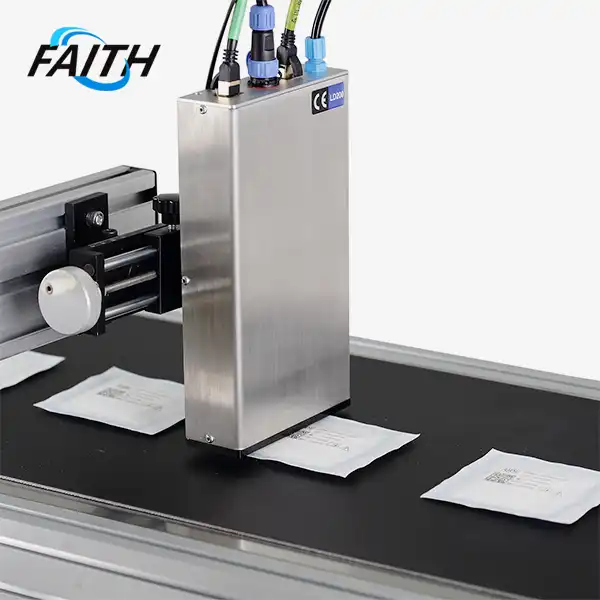Are all printers inkjet?
In today's fast-paced manufacturing world, printing technology plays a crucial role in product identification, traceability, and packaging. From food and beverage to pharmaceuticals, cosmetics to electronics, the need for reliable and efficient printing solutions is paramount. While inkjet printers are widely used, not all printers fall under this category. This article delves into the world of printing technologies, with a special focus on small character inkjet coders and their applications across various industries.
The Diversity of Printing Technologies in Industry
When it comes to industrial printing, the landscape is far more diverse than many realize. While inkjet technology is ubiquitous, it's not the only player in the game. Let's explore some of the main printing technologies used in manufacturing:
- Laser Printing: This technology uses a laser beam to produce high-quality, precise prints. It's often employed in situations requiring extreme durability, such as in the automotive or aerospace industries where parts need permanent marking.
- Thermal Transfer Printing: This method involves transferring ink from a ribbon onto the substrate using heat. It's commonly used for printing barcodes and labels, especially in logistics and retail sectors.
- Flexographic Printing: Often used for packaging, flexographic printing utilizes flexible relief plates and fast-drying inks. It's ideal for printing on various materials, including plastic, metallic films, and corrugated cardboard.
- Inkjet Printing: This versatile technology comes in several forms, including continuous inkjet (CIJ) and drop-on-demand (DOD) systems. Small character inkjet coders, a subset of CIJ technology, have gained popularity due to their speed and adaptability.
While each of these technologies has its place, small character inkjet coders have emerged as a frontrunner in many industries due to their unique advantages.
The Rise of Small Character Inkjet Coders
Small character inkjet coders have revolutionized product marking across numerous industries. These devices, capable of printing tiny, precise characters at high speeds, have become indispensable in modern manufacturing processes.
The magic behind small character inkjet coders lies in their ability to control minuscule ink droplets with remarkable precision. The printing principle can be summarized as controlling the movement of charged particles in an electric field. Here's how it works:
- A built-in pump creates a stable ink flow.
- The ink enters a crystal oscillator (spray chamber) through a control solenoid valve.
- Electronic pulses generate vibrations in the crystal oscillator, breaking the ink flow into individual droplets.
- With a vibration rate of up to 70,000 times per second, these devices can form an astonishing 70,000 ink droplets every second.
This high-speed, precise operation makes small character inkjet coders ideal for a wide range of applications, from date coding on food packages to serial numbers on electronic components. The versatility of small character inkjet coders is further enhanced by their ability to print on various surfaces, including plastic, glass, metal, and paper. This adaptability, combined with their high speed and precision, makes them a preferred choice in industries with diverse packaging needs and high-speed production lines.
Industries Benefiting from Small Character Inkjet Coders
The applications of small character inkjet coders span across numerous industries, each with its unique requirements and challenges. Let's explore how these versatile devices are making a difference:
- Food and Beverage Industry: In this fast-paced sector, small character inkjet coders shine. They effortlessly print production dates, expiration dates, batch numbers, and barcodes on various packaging materials. Their high-speed operation ensures they keep pace with rapid production lines, while their adaptability allows them to print on plastic bottles, glass jars, metal cans, and more.
- Pharmaceutical Industry: Precision and compliance are paramount in pharmaceuticals. Small character inkjet coders meet the stringent requirements for high-quality, high-precision coding on drug packaging. They accurately print batch numbers, expiration dates, and QR codes, ensuring traceability and adherence to regulatory standards.
- Cosmetics and Personal Care: The cosmetics industry demands both functionality and aesthetics in its packaging. Small character inkjet coders rise to the challenge, printing clear, beautiful labels on small and diverse packaging types. Their precision ensures that even the tiniest containers carry all necessary information without compromising the product's visual appeal.
- Electronics Manufacturing: In the world of electronic components, where space is at a premium, small character inkjet coders prove invaluable. They excel at printing small-size, high-precision codes such as serial numbers and product models. The durability of the prints ensures that crucial information remains legible throughout the product's lifecycle.
- Automotive and Aviation: These industries require marking on a variety of materials, often in challenging environments. Small character inkjet coders produce prints that are resistant to high temperatures and corrosion, ensuring long-lasting, stable labeling on parts and components.
- Wire, Cable, and Pipe Industry: The continuous production environment in these industries demands a printing solution that can keep up. Small character inkjet coders excel at continuous printing over long distances, adapting seamlessly to the production flow.
- Building Materials: From glass to ceramics to metal parts, the building materials industry relies on small character inkjet coders for product identification and traceability. The versatility of these devices allows them to print on a wide range of surfaces, ensuring clear, lasting marks.
The widespread adoption of small character inkjet coders across these diverse industries testifies to their versatility, reliability, and efficiency. As manufacturing processes continue to evolve, these devices are likely to play an increasingly important role in ensuring product quality, traceability, and regulatory compliance.
Conclusion
In conclusion, while not all printers are inkjet, small character inkjet coders have carved out a significant niche in industrial printing. Their speed, precision, and adaptability make them an invaluable tool across numerous sectors. As we've seen, from food packaging to aerospace components, these devices are helping manufacturers meet the demands of modern production environments.
If you're interested in exploring how small character inkjet coders or other industrial UV inkjet coding and traceability system solutions can benefit your operations, we're here to help. With over a decade of experience in the inkjet printing industry, we're committed to providing innovative, customized solutions to meet your specific needs. Reach out to us at sale01@sy-faith.com to learn more about how we can support your printing requirements.
References
1. Kipphan, H. (2001). Handbook of Print Media: Technologies and Production Methods. Springer Science & Business Media.
2. Romano, F. J., & Romano, R. M. (1998). The GATF Encyclopedia of Graphic Communications. GATF Press.
3. Leach, R. H., & Pierce, R. J. (1993). The Printing Ink Manual. Springer Science & Business Media.
4. Wijshoff, H. (2010). The dynamics of the piezo inkjet printhead operation. Physics Reports, 491(4-5), 77-177.
5. Magdassi, S. (Ed.). (2009). The Chemistry of Inkjet Inks. World Scientific.
Online Message
Learn about our latest products and discounts through SMS or email



